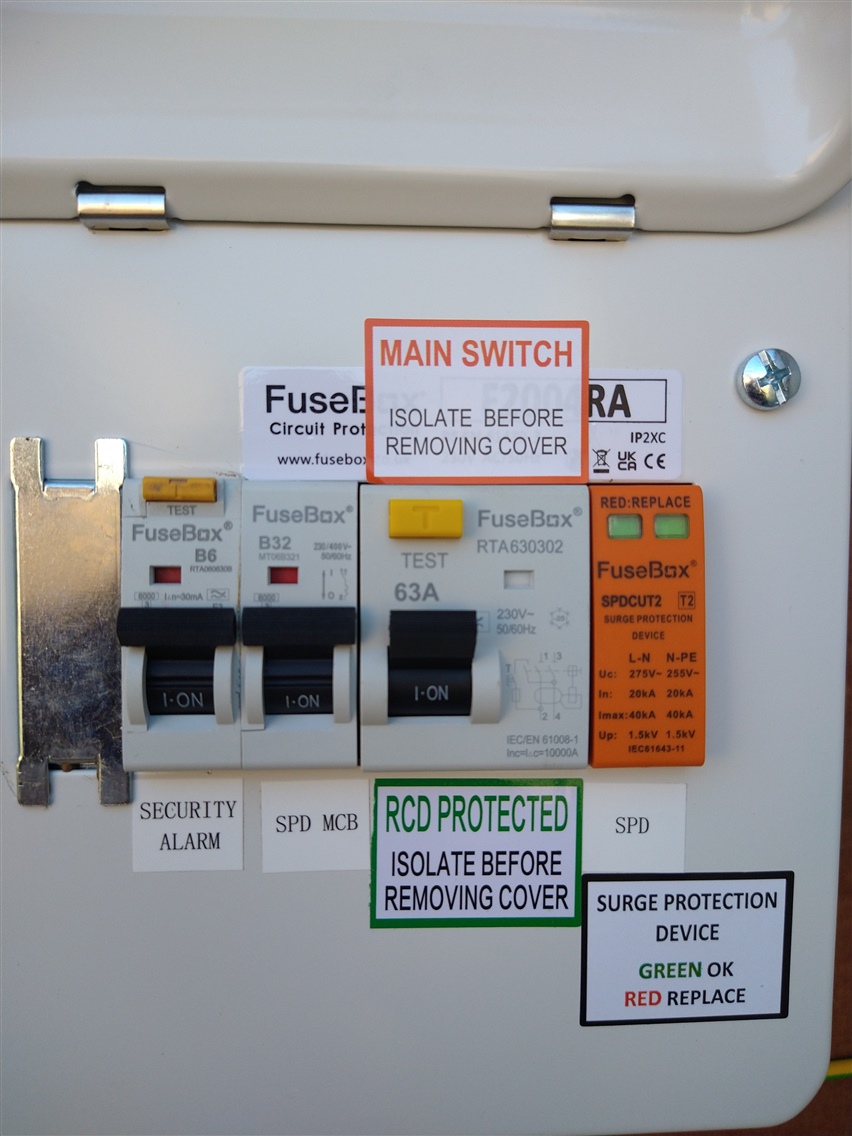Hi
I'm going to let the photo speak for it's self. The RCBO is powering a PSU with battery back up, which is powering a social housing alarm system. All the equipment is mounted in a steel cabinet on the outside wall of a bungalow. The supply is a TNCS.
All comments will be gratefully received.
Thanks

